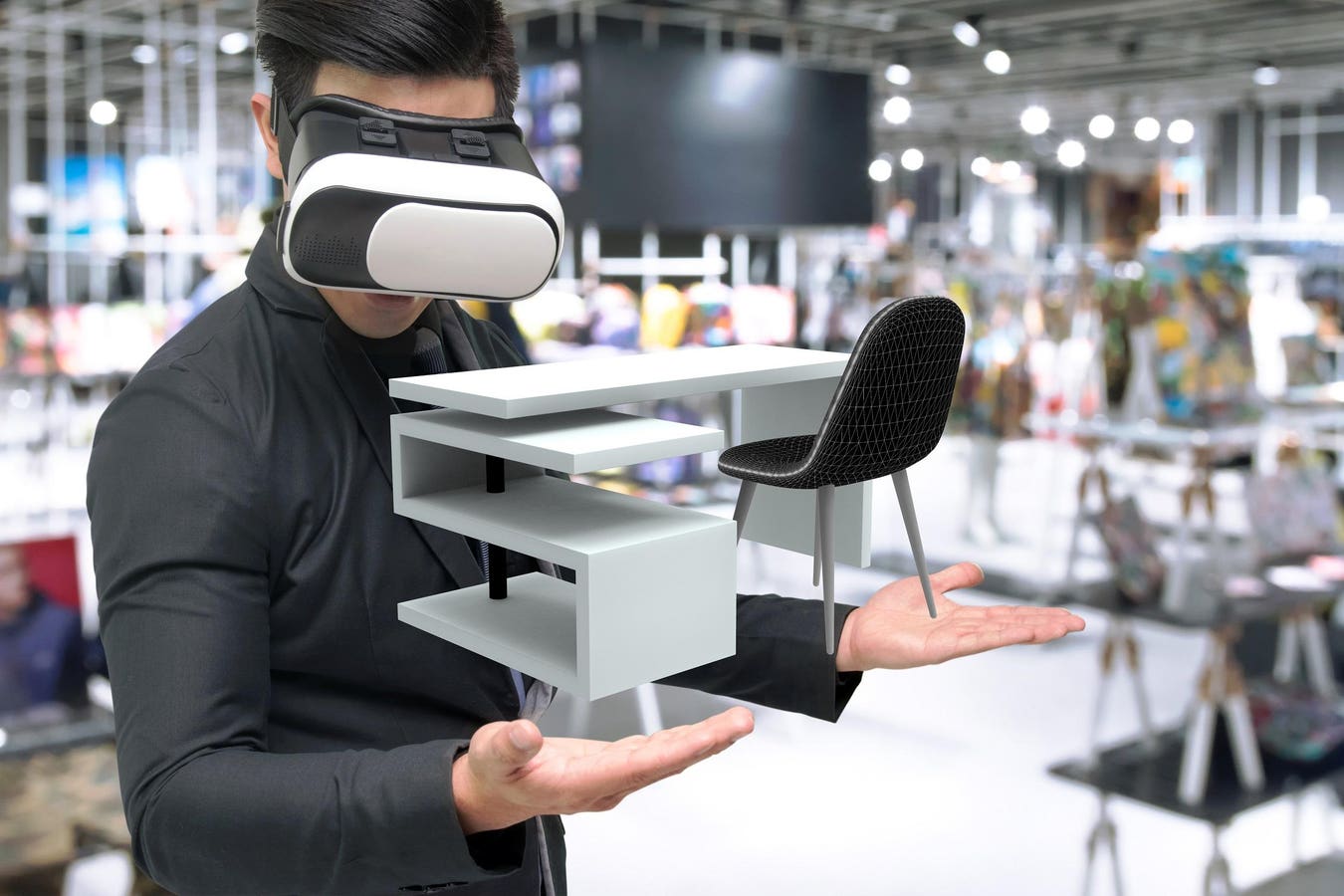In my book, “Extended Reality In Practice,” I highlight over 100 examples of how augmented reality and virtual reality are transforming our world.
In this post, I want to take a closer look at the retail sector and give you some of my favorite examples of how AR and VR are being used to improve conversion rates and make the customer journey more interesting.
Even before the pandemic hit, retail was ripe for an overhaul, particularly the online shopping experience. For example, there’s a well-known reason why people don’t typically buy furniture online: It’s because it’s tricky to judge the size of a couch, end table, or dresser without seeing it in person. But now, retailers are using AR to help customers digitally project furniture into their homes, so customers can accurately judge whether an item is the right size and style for their space.
Similar things are now possible for things like glasses, jewelry, clothes, shoes, or anything else shoppers want to buy.
Here are my ten favorite examples of how VR and AR are being used in the retail sector.
1. Nike uses augmented reality and virtual reality in their physical stores. Customers can scan items like shoes or clothing to view information, or they can enter a VR world to experience the different steps in Nike’s supply chain so they understand how and where items are being made.
2. IKEA has developed The Place App, which allows shoppers to use augmented reality with their smartphone camera to place furniture items into their homes so they can visualize exactly how the item will look in their setting.
3. Warby Parker’s customers can use AR to try on glasses from the comfort of their homes, so they can pick out the perfect frames.
4. L’Oreal now offers augmented reality-powered makeup try-on experiences, delivered in collaboration with Facebook. Customers can experiment with the world’s leading beauty brands, such as Maybelline, L’Oréal Paris, Lancôme, Giorgio Armani, Yves Saint Laurent, and Urban Decay.
5. Luxury watch retailer WatchBox uses AR to let customers try on different sizes of watches to pick out the perfect one and make sure it looks great on their wrist.
6. FaceCake has created an Infinite Virtual Closet that allows users to create and build a dream closet with aspirational wardrobe and jewelry items, then virtually try them on. The AI-driven shopping platform also gives shoppers curated style recommendations. Imagine being able to virtually try on earrings and actually being able to see them dangling from your ears!
7. BMW’s augmented reality experiences allow car shoppers to go into showrooms and customize cars with different colors or styles using their tablets or phones. Or they can put on virtual reality goggles and experience what it’s like to drive the cars, so they understand their options and can make the perfect choice for their new vehicle.
8. Apple brought their physical retail stores home during the pandemic using AR technology to showcase their products. Shoppers can use AR Quick Look for new iPhone or iMac models, so you can see what they look like in your space or in your hand.
9. Toms, the shoes and apparel company, has installed virtual reality in hundreds of their stores across the world to give customers the ability to transport themselves to Peru. Toms donates $1 of every $3 they make to local people who play a part in their supply chain – and customers can experience the impact of that initiative via virtual reality.
10. Fashion retailer Asos now has simulated models on the website that you can dress up using AR, so you can see how garments look on different body types. In the future, we will likely have our own avatars, so we can have our bodies scanned and try out our own avatars in the digital world.
These are some of the most innovative, leading-edge examples of augmented and virtual reality in retail.
Want to know more about how AR and VR are being used in the real world? Check out my latest book, “Extended Reality in Practice: 100+ Amazing Ways Virtual, Augmented, and Mixed Reality Are Changing Business and Society.”
